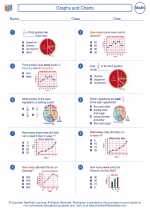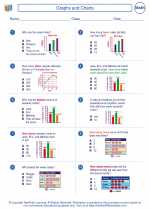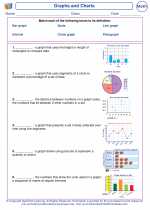Frontal Lifting
Frontal lifting refers to the process by which warm, less dense air is forced over cooler, denser air along a weather front. This lifting mechanism can lead to the formation of clouds and precipitation.
When a warm air mass and a cold air mass meet along a front, the warm air is forced to rise over the denser cold air. As the warm air rises, it cools, and its moisture condenses to form clouds. If the lifting is strong enough, it can result in the formation of thunderstorms and heavy precipitation.
Frontal lifting plays a crucial role in the development of weather systems, as it is often associated with the formation of rain, snow, and other forms of precipitation. Meteorologists study frontal lifting to understand and predict the behavior of weather systems.
Understanding frontal lifting is important for predicting weather patterns and their potential impact on the environment and human activities.
.◂Math Worksheets and Study Guides Third Grade. Graphs and Charts

 Activity Lesson
Activity Lesson
 Activity Lesson
Activity Lesson
 Activity Lesson
Activity Lesson
 Worksheet/Answer key
Worksheet/Answer key
 Worksheet/Answer key
Worksheet/Answer key
 Worksheet/Answer key
Worksheet/Answer key
 Worksheet/Answer key
Worksheet/Answer key
 Worksheet/Answer key
Worksheet/Answer key
 Worksheet/Answer key
Worksheet/Answer key
 Worksheet/Answer key
Worksheet/Answer key
 Worksheet/Answer key
Worksheet/Answer key
 Worksheet/Answer key
Worksheet/Answer key
 Worksheet/Answer key
Worksheet/Answer key
 Vocabulary/Answer key
Vocabulary/Answer key
